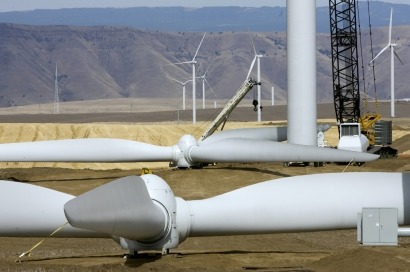
All told, investment in the sector dropped by more than a third during the first three months of 2011 to $31.1 billion. That’s the lowest amount of investment in renewable energy since the $20.5 billion that flowed to industry during the first quarter of 2009, which is considered to be the depth of the financial crisis.
To show just how much the winds of venture capital, private equity and asset finance have changed, the dramatic decline in investment comes on the heels of a record $47.1 billion in financing deals during the fourth quarter of 2010.
In the past year Germany and Spain announced reductions in the guaranteed prices that they pay for electricity from renewable sources, and as reported yesterday by REM, Italy is about to follow suit. In the meantime, the UK is also reviewing its rates.
At the same time, natural gas prices in the US declined to their lowest levels in nine years last fall due to a glut in production.
“Predictably, the first quarter saw a bit of a hangover from the hectic investment activity seen in the final months of last year as financiers rushed to close deals to meet their internal targets or to catch feed-in tariffs due to expire in countries such as Germany, Italy and the Czech Republic,” said Michael Liebreich, chief executive of Bloomberg New Energy Finance. “However the high level of investment in emerging economies, particularly China and Brazil, is encouraging.
“Whether 2011 turns into another record year for clean energy investment will depend in part on whether the improving cost-competitiveness of renewable power, particularly solar photovoltaics, can outweigh policy uncertainties that continue to dog several important developed economy markets,” Liebreich continued. “Neither the upheavals in the Middle East nor the Japanese nuclear crisis will have any short-term impact on clean energy, although in the long term it may be a different story.”
Bloomberg New Energy Finance’s quarterly figures for new financial investment cover three types of funding: asset finance of utility-scale renewable energy projects such as wind farms, solar parks and bio-fuel refineries; public market investment in clean energy companies; and investment by venture capital and private equity players in unquoted clean energy firms. They do not cover investment in distributed power generation, which boomed by 91 percent last year, or investment in research, development and deployment.
Two of the three asset classes covered saw significant declines in activity between Q4 2010 and Q1 2011.
Taking asset finance first, there was a decline to $25.7 billion in the first quarter of 2011 from $36.6 billion in the last quarter of 2010. The biggest reductions in asset finance in terms of absolute dollars came in US wind and European solar.
The brightest spots of January-March 2011 were Chinese wind, up 25 percent on the same quarter of 2010 at $10 billion, and Brazilian wind, which saw investment double to $2.1 billion from a year earlier.
Key projects going ahead included the 211 MW IMPSA Ceara wind auction portfolio and 195 MW Renova Bahia portfolio, both in Brazil, and the 200 MW Hebei Weichang Yudaokou village wind farm in China.
Although European wind was down around 10 percent at $4.4 billion, this figure was bolstered by several large offshore wind infrastructure commitments, including the Dan Tysk project off Germany, the Skagerrak 4 project off Denmark, and the Randstad project off the Netherlands.
In public market investment, the first quarter saw a sharp fall from Q4’s $8.1 billion to $3.6 billion – although this was above the equivalent figure for the same quarter in 2010 of just $2.1 billion. Transactions included a $1.4 billion share sale by Sinovel Wind in China, and a $220 million offering by solar manufacturer Shandong Jinjing Science & Technology, also in China.
Venture capital and private equity investment was up slightly at $1.8 billion in Q1, from $1.7 billion in the fourth quarter of last year.
However the latest figure was down 38 percent from the equivalent total for the first quarter of 2010. By far the biggest sector for VC/PE investment in the first three months of this year was energy-smart technologies, with deals including a $112 million Series B round for US electric vehicle company Fisker Holdings. The largest transaction of the quarter however was a $143 million expansion capital round for US biomass and waste-to-energy specialist Plasma Energy.
For additional information:

